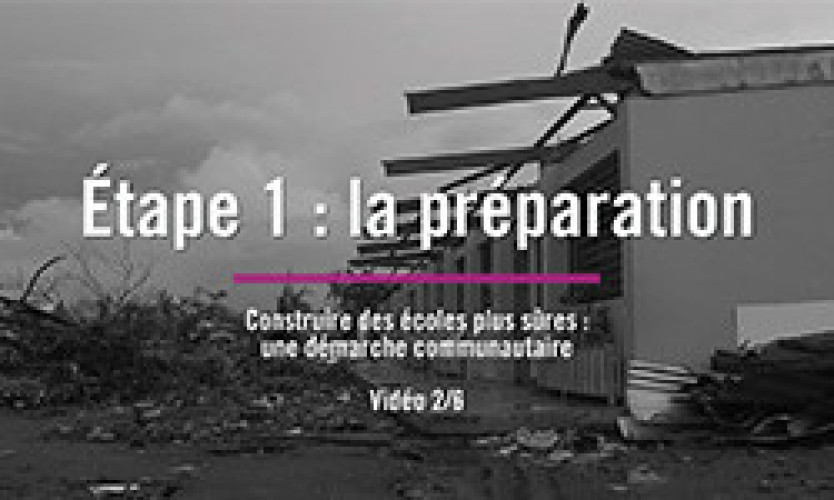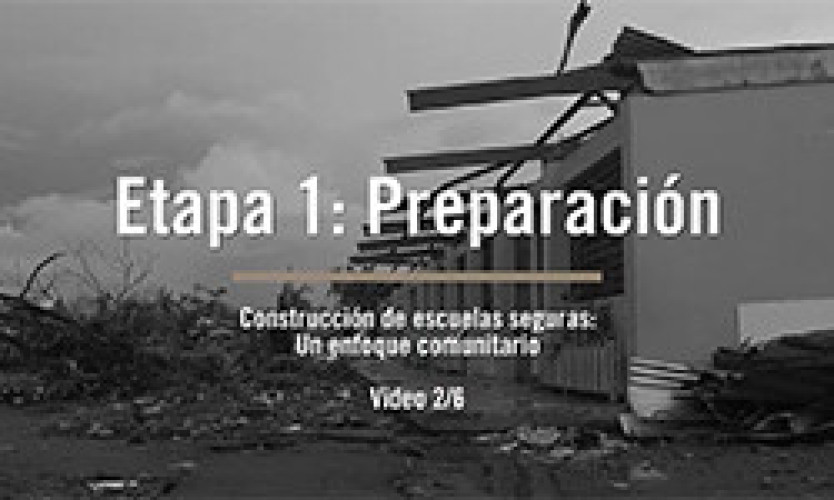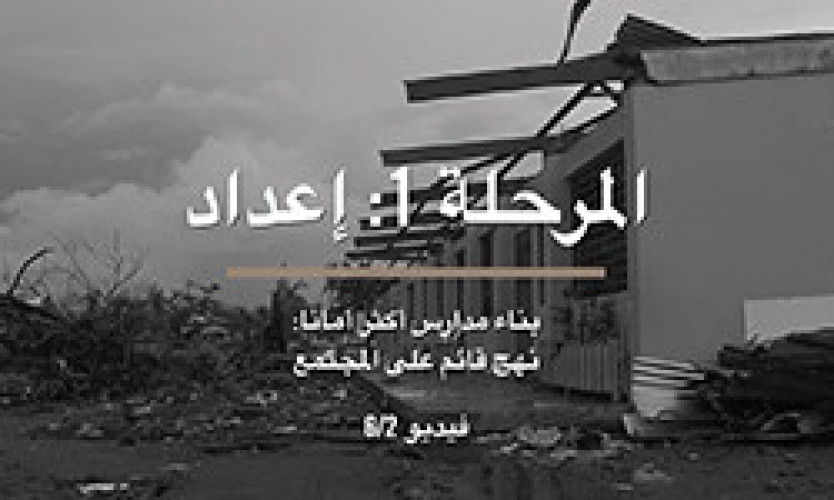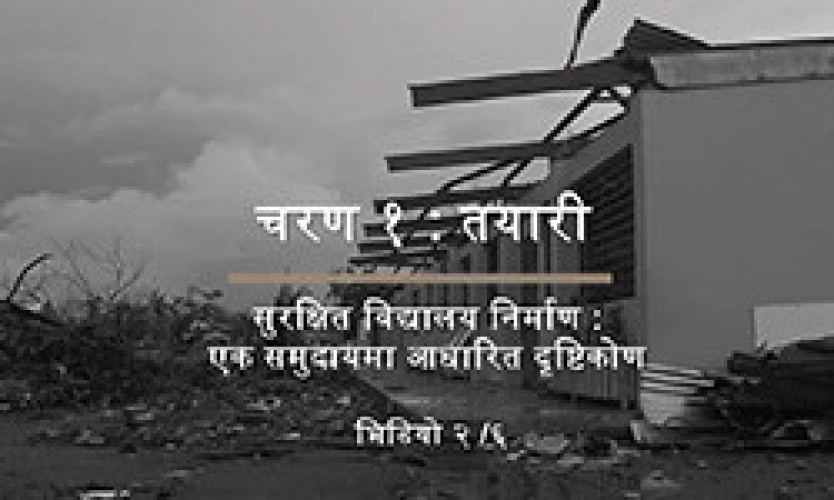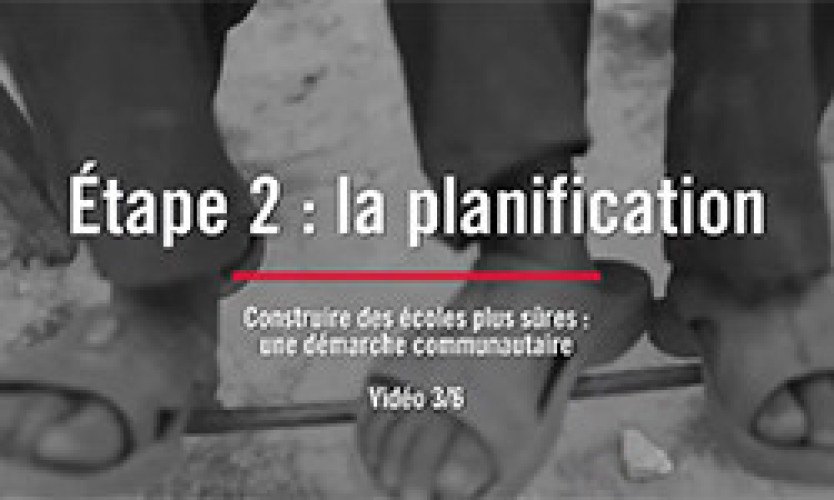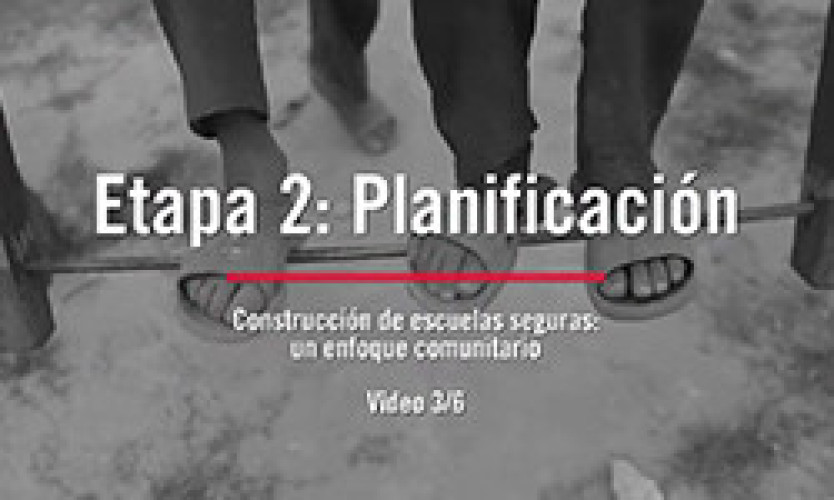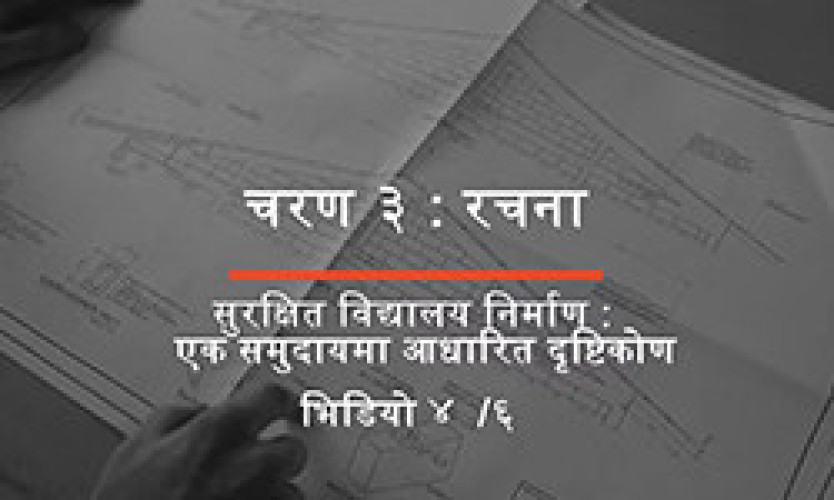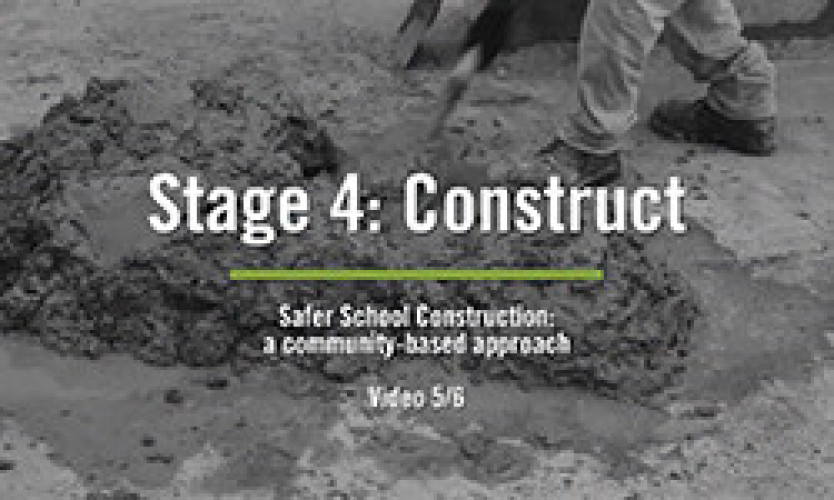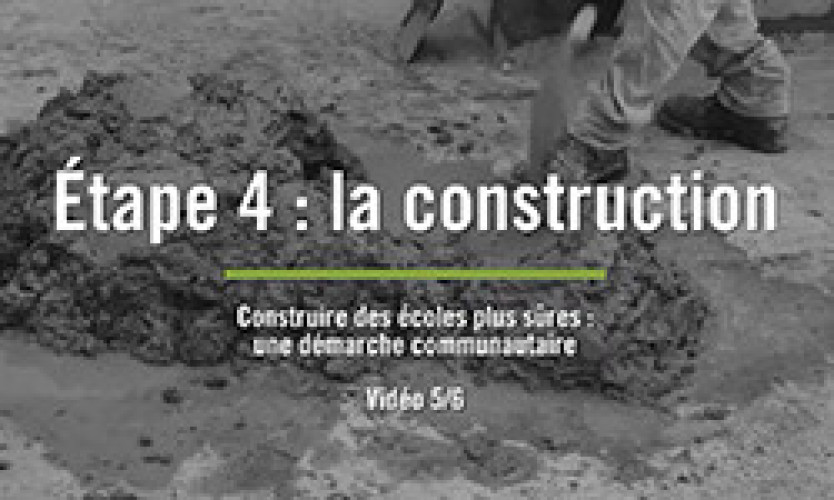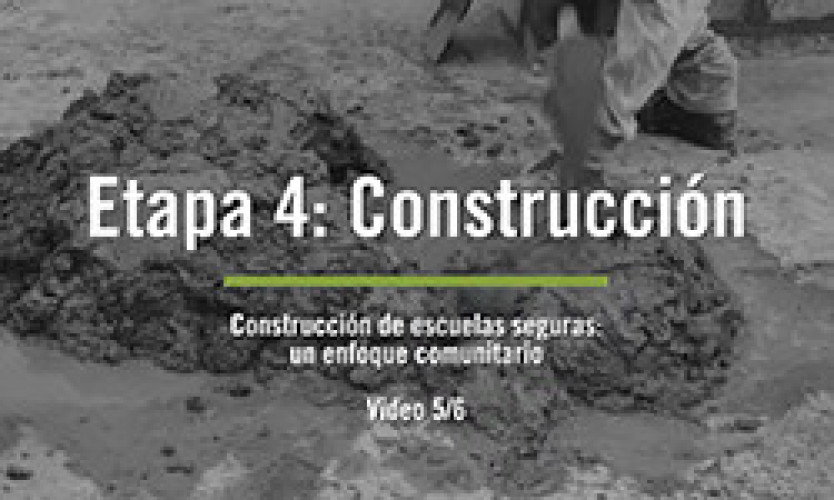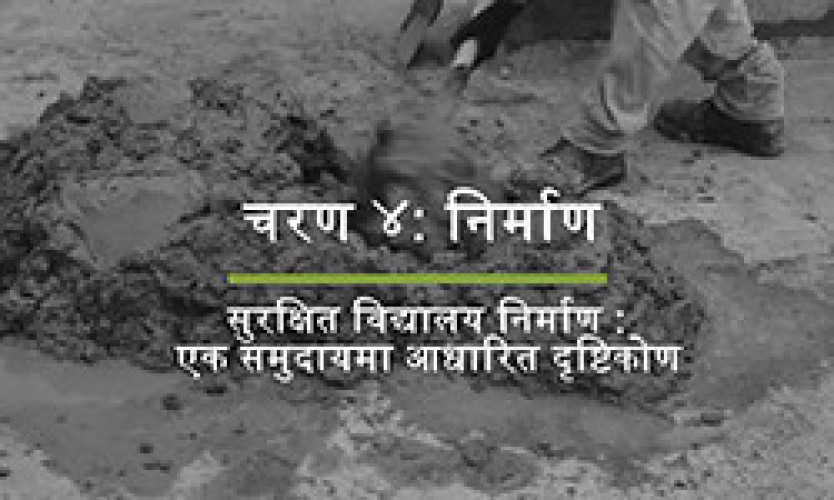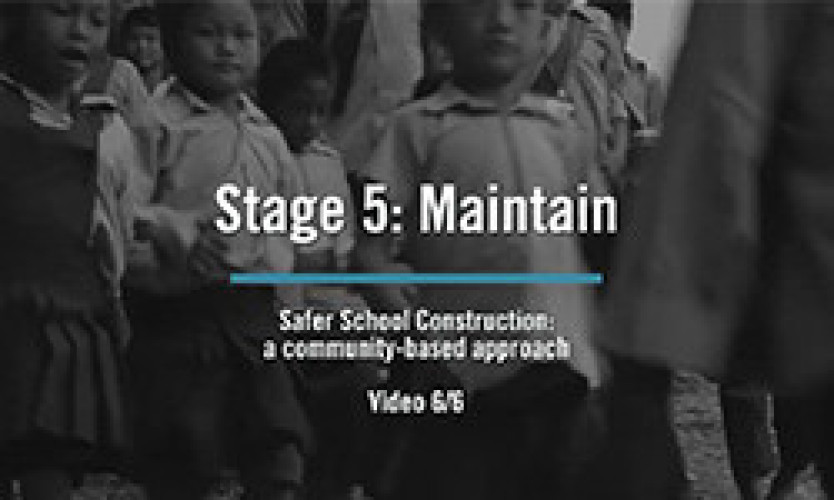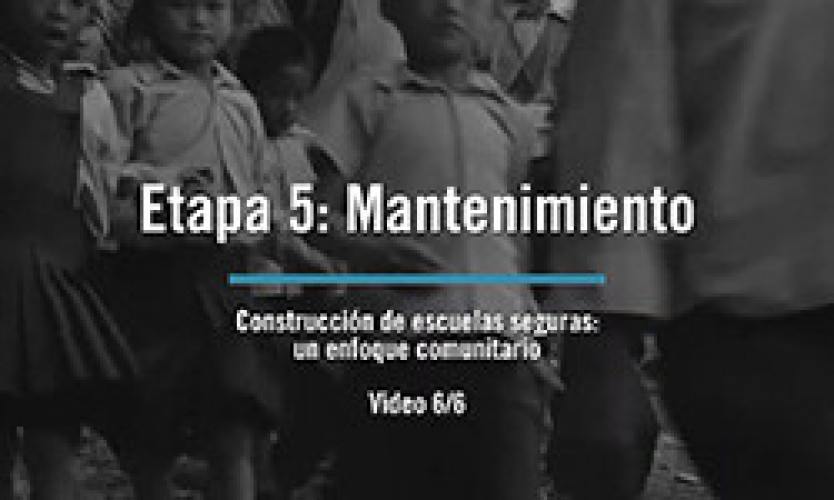GADRRRES COLLECTION
Towards Safer School Construction: A community-based approach
GADRRRES COLLECTION
Towards Safer School Construction: A community-based approach
Towards Safer School Construction: A community-based approach provides guidance on the process of community-based safer school construction, an approach to school construction that seeks to achieve the twin goals of safer schools and more resilient communities.
Audience
The manual is for decision-makers and programme managers from humanitarian and development organisations involved in school construction in hazard-prone areas. The manual also provides insight for community Disaster Risk Reduction and Disaster Management practitioners within the education sector.
The brochure introduces the Safer School Construction initiative, seeking to achieve the twin goals of safer schools and more resilient communities.
The videos playlists (available in English, Français, Español, नेपाली and العربية) intend to strongly justify why the viewer should consider a community-based approach to school construction and why the viewer should insist on a safer school approach that considers hazards in the site plan, design, and construction of the school.

About the Approach
Every year, unsafe schools collapse or are damaged in floods, fires, or other natural hazards. As a result, thousands of children are at risk. School is the one place every child must attend. As a community, we are responsible for creating safer schools for our children.
A community approach to safer school construction makes sure schools are resistant to hazards and gives communities the chance to learn new skills. A community approach is sometimes called a community-based approach.
The community approach means that communities are involved in creating a safer school, from planning through to design and construction. From what they learn at the safer school project, the community becomes resilient. It will be able to recognise hazards. It will prepare for, respond to, and recover from any damage. Most importantly, it will reduce the likelihood or impact of disasters.
Benefits of a community approach:
- Improved local economies. Local workers will have access to jobs and learn new skills.
- Higher quality builds. Communities can monitor school construction and check that funds are being used appropriately.
- Community ownership. A sense of community ownership will improve school maintenance after construction is over.
- A broader culture of safety. Communities will better understand risks in their homes and neighbourhoods, as well as in schools. They will learn how to adopt safer construction techniques and become advocates for safety for themselves and other communities.
Key Principles of Community-Based Safer School Construction
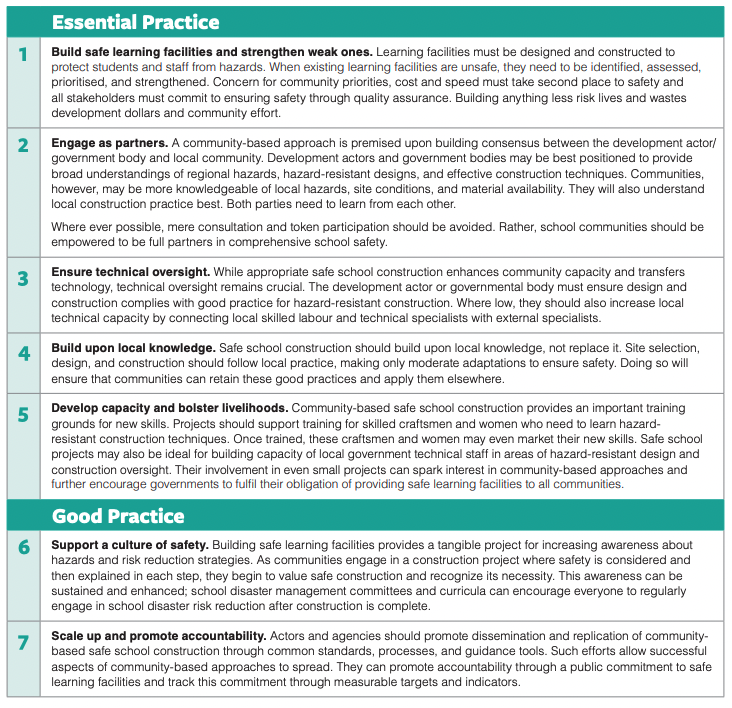
Overview of Stages and Videos in multiple languages
All schools should be durable and functional, even after a disaster. The safer schools construction approach treats construction as a community learning opportunity. It works to build the community’s resilience, skills and abilities, and results in safer school buildings. When laying foundations and raising walls, communities become knowledgeable caretakers of their schools. They become champions of a culture of safety – in their school, community, and beyond.
Stage 1: Prepare
The first stage starts with learning and preparing. The program manager (the person who makes sure construction is completed on time and on budget) must first understand the local context. Then they must help communities understand that safer schools are possible.
There are four steps in Stage 1:
- Understand the context
- Identify methods of working
- Raise awareness
- Form a school management committee
Stage 2: Plan
In the community planning stage, the program manager and school management committee talk with safety experts and find a safe site for building a school. They also talk with the community to understand what kind of school is needed.
There are three steps in Stage 2:
- Determine need
- Assess project viability
- Create a project plan
Stage 3: Design
In the community design stage, the program manager introduces the design team to the school management committee. Working back and forth, the design team and committee select a school design that will be safe, inspiring and achievable.
There are three steps in Stage 3:
- Consult with the community
- Sketch design options
- Finalise the design
Stage 4: Construct
During community construction, the program manager makes sure everyone working on the school project is trained in hazard-resistant construction and that the workers follow the design. The school management committee helps monitor the process, and the program manager also ensures the project is independently inspected for safety.
There are three steps in Stage 4:
- Monitor construction
- Build local abilities
- Practice and communicate safety
Stage 5: Maintain
In the post-construction stage the school is handed over to the community with a big celebration. The school management committee then focuses on developing school safety procedures and educational tools. These will ensure that both the lessons of safety and the school building itself are maintained.
There are three steps in Stage 5:
- Develop a school use manual and maintenance plan
- Celebrate completion and integrate safety
- Promote broader responsibility
Case Studies
Trade-off in post disaster response
Country: Haiti Organisation: Save the Children Hazards: Earthquakes, flash floods, high winds
In the complex and shifting situation after the 2010 Haiti earthquake, international humanitarian organisation Save the Children helped provide school buildings to get children off the streets and back into school. Amid conflicting priorities and pressures of time, resource constraints, internal organisational mandates, and relations with the Haiti government, Save the Children made difficult trade-offs of quality, speed, and cost to complete their mission using community-based principles.

A de-centralised approach to school construction
Country: Indonesia Organisations: Ministry of Education, Ministry of Public Works, Ministry of Finance, World Bank Hazards: Earthquakes, floods, landslides, high winds, volcanic eruptions, tsunamis
Since 1999, Indonesia has been decentralising almost all sectors of its government. As part of giving power to local authorities, the Ministry of Education and Culture gave funding and decision-making power to school management committees, even enlisting them to manage school construction. Although the government is still struggling to provide appropriate funding and technical support, many school communities have already constructed new school buildings or rehabilitated existing buildings.
Read more about one of Indonesia’s biggest school construction programs

Fostering demand for safer schools
Country: Nepal Organisations: National Society for Earthquakes Technology-Nepal (NSET) Hazards: Earthquakes
Nepal has a history of destructive earthquakes. Until recently, the country has done little to protect its infrastructure and housing. In response, the NSET has started to raise national awareness through safer construction practices. NSET started a public dialogue about the imminent threat of earthquakes, and has offered tools to help the community be more resilient. NSET encourages the community to connect with outside funding sources, so costs are shared. In all projects, NSET works to identify which schools are most likely to scale-up the program in their communities and protect more Nepali children and adults.

Rapid visual assessment for retro-fitting
Country: El Salvador Organisations: UNESCO, University of El Salvador, University of Udine, Italy Hazards: Earthquakes
Rapid visual assessment is the first step before school reconstruction programs can begin. In El Salvador, UNESCO and two universities piloted a tablet-based rapid visual assessment tool. The project assessed 100 school buildings in 10 days, and built the capacity of government officials, professionals and engineering and architecture students along the way. For many, the pilot was their introduction to building assessments and the fundamental principles of seismic-resistant design.
Read more about El Salvador’s tablet app for school construction
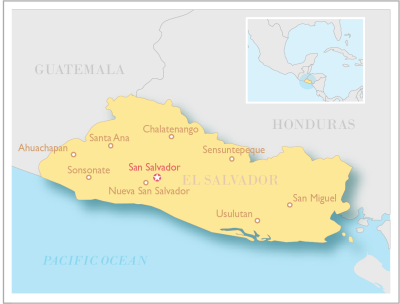
Sustainable design: building from the ground up
Country: Republic of Ghana Organisations: Sabre Charitable Trust, Arup International Development Hazards: High winds, earthquakes, extreme temperature
Local building materials and design preferences were introduced into kindergartens in Central and Western Ghana, paying special attention to sustainability principles. Through prolonged research and community interaction, the team from Sabre Charitable Trust and Arup International Development created a design that catered for modern preferences for concrete, alongside local materials, to create safer schools.
Read more about sustainable, local construction materials in Ghana

Training masons to build seismic-resistant schools
Country: India, Uttar Pradesh Organisations: India’s national and state governments, United Nations Development Programme (UNDP), World Bank Hazards: Earthquakes
In 2006, the Uttar Pradesh State Government in India approved a hazard-resistant design for a massive school construction project that aimed to build thousands of schools. At the time, there was government capacity but local capacity was low. There were too few engineers to be present across thousands of construction sites, and many of the schools were remote. This was a good opportunity to introduce involvement with a community approach
The state government wanted to raise the capacity of thousands of communities through training. By 2007, the state government, in partnership with UNDP and with a loan from the World Bank, constructed almost 7,000 seismically safe schools and 82,000 additional classrooms in Uttar Pradesh.
Read more about how Indian masons were trained in new, safer techniques

Influencing Comprehensive School Safety
Country: India Organisations: SEEDS, Nayang Technical University, Ministry of Education, Ministry of Public Works, Temasek Foundation Hazards: Earthquakes, flash floods, landslides
After witnessing the pattern of earthquakes and other natural hazards, in 1994 SEEDS began working with Indian communities, technical universities and government authorities. The project helped train engineers and masons and provided necessary retrofits to schools. While the number of retrofitted schools was low, SEEDS spent more than a year in each community to work to change the culture of safety as well as increase the safety of school buildings. Newly trained local masons retrofitted schools while engineers provided oversight during the process.
Read more about how drills and other initiatives brought a culture of safety in India

Resources
The focus of this manual is on the process of community-based school construction. It should supplement technical guidance on appropriate construction materials and techniques, such as UNESCO’s 2013 Guidelines for Earthquake-Resistant Non-Engineered Construction. This manual considers community-based school construction in depth, supplementing the broader Guidance Notes on Safer School Construction published in 2009 by the Global Facility for Disaster Reduction and Recovery (GFDRR) of the World Bank and the Inter-Agency Network for Education in Emergencies (INEE).



